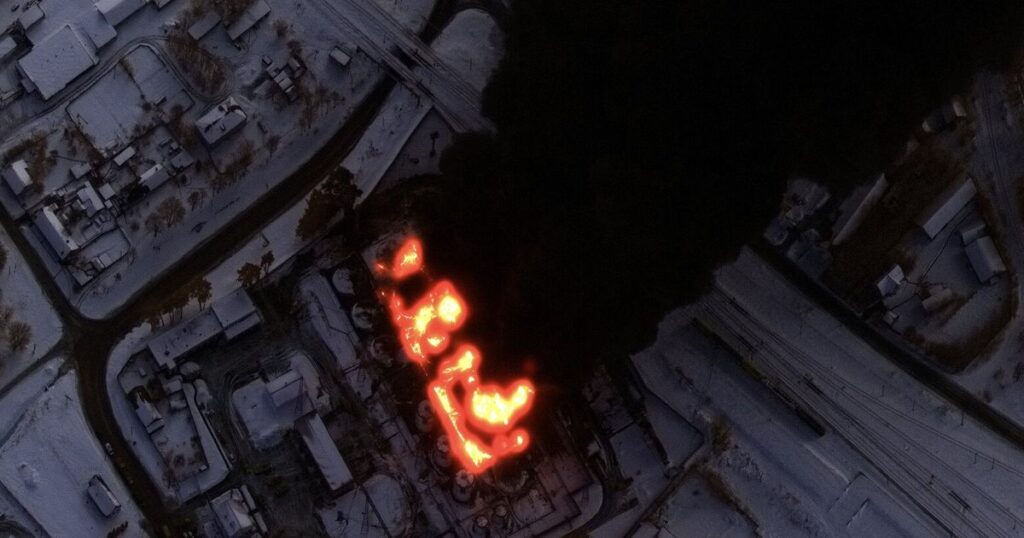KYIV, Ukraine — Movement on the front lines in Ukraine has largely stalled in a bloody stalemate. The Trump administration’s peace talks haven’t budged since Russia turned down a ceasefire in August. But Ukrainian officials argue that they still have a strategy to end the war: Strike deep inside Russia with missiles and drones.
Refineries, factories, ports and railroad lines have already been blown up. Ukraine now has an arsenal capable of hitting much of western Russia, where much of the country’s oil processing industry is concentrated. Kyiv has also announced a new weapon, called the Flamingo, that it says could reach Russia’s industrial heartland in the Ural Mountains.
With long-range strikes, Ukraine aims to batter the country’s oil industry and bring the pain of the war home to Russians. The question is whether the strategy will be enough to sway the Kremlin to negotiate in earnest.
What is Ukraine’s thinking?
The ramping up of the deep-strike campaign is Ukraine’s latest reinvention of its war effort.
Ukraine pushed back Russia’s initial invasion with the patriotic fervor of volunteer soldiers. Later, Ukrainian President Volodymyr Zelenskyy lobbied relentlessly for Western heavy weapons to hold the trench lines.
Now, long-range strikes aim to force Russia into a settlement by inflicting damage on its already strained economy and by spurring a largely pacified Russian public to begin to agitate against the war.
Zelenskyy calls the campaign “long-range sanctions” or “drone sanctions,” casting it as a ratcheting up of economic pressure.
“Putin has been offered many times to end the war or at least cease fire,” Zelenskyy said in a video address to Ukrainians on Wednesday, referring to President Vladimir Putin of Russia. “He spurned all proposals — ours and America’s. So it’s only fair that Russia bears the war’s full cost.”
What weapons are being used?
The drones and missiles have colorful names such as Neptune, Flamingo, Furious and Beaver. Some emerged from a robust Soviet-legacy arms industry in Ukraine. Others sprang from wartime startups.
Before Russia’s full-scale invasion in 2022, Ukraine had a scrappy tech culture. Notable successes included Ring, the video doorbell company bought by Amazon. When Russia invaded, engineers shifted to making drones.
This summer, a Ukrainian company unveiled the Flamingo, a cruise missile with a claimed range of more than 1,800 miles. The Neptune is an anti-ship missile adapted to hit land targets. Zelenskyy said in recent days that both had now been used to strike inside Russia.
Drones such as the Furious and the Beaver are cobbled together from plastic, carbon fiber, Styrofoam and cardboard. Though relatively small, they can fly about 600 miles — far enough to hit Moscow if they can breach Russian air defenses.
Ukraine has promoted its increasing reliance on domestically produced arms to strike Russia. But it is also in talks with the United States to obtain Tomahawk missiles, which could add another long-range weapon to the campaign.
Putin has warned that giving Tomahawks to Kyiv would be “a qualitatively new stage of escalation” by the United States in the war. On Sunday, President Donald Trump hinted that he might try to use the possibility of sending the missiles to Ukraine to pressure Putin into settling the war. Zelenskyy will meet with Trump on Friday in Washington.
What is being hit?
In typical nightly exchanges of fire, the Russian military launches far more drones and missiles into Ukraine than the Ukrainian military aims at Russia.
But Ukrainian officials say that if their strikes can cause enough damage and mayhem, they could ultimately negotiate a trade: Kyiv halts attacks if Moscow does the same.
Over the course of the war, Ukraine has conducted many long-range strikes on Russian military sites such as ammunition depots and logistics hubs. Ukraine’s current focus is on oil refineries, which are particularly prized targets that put pressure both on the economy and on morale.
Several regions have faced fuel shortages, prompting many Russians to wait in lines to gas up their cars. And when refineries are attacked, their flammable fluids burn dramatically in ways that can be seen from miles around.
While Kyiv says it does not target Russian civilians in strikes, some Ukrainian leaders have spoken of the need to hit war-related sites in Moscow itself to change the Kremlin’s thinking.
What is Trump’s response?
Ukraine has said that it wants to signal to the United States, in every way possible, that it is compliant with Trump’s demands in settlement talks — including by giving U.S. companies priority in potential postwar mining deals.
Kyiv has framed the strikes on Russia as aiding Trump’s peace initiative, aiming to show that Ukraine has enough firepower to make Moscow think twice about continuing to fight.
Trump has said he supports the strikes. In August, he wrote on social media that “it is very hard, if not impossible, to win a war without attacking an invaders country.” He went on to criticize the Biden administration for curtailing Ukraine’s ability to hit inside Russia. Trump had previously faulted that administration for ultimately letting Ukraine use American long-range missiles to strike Russia.

